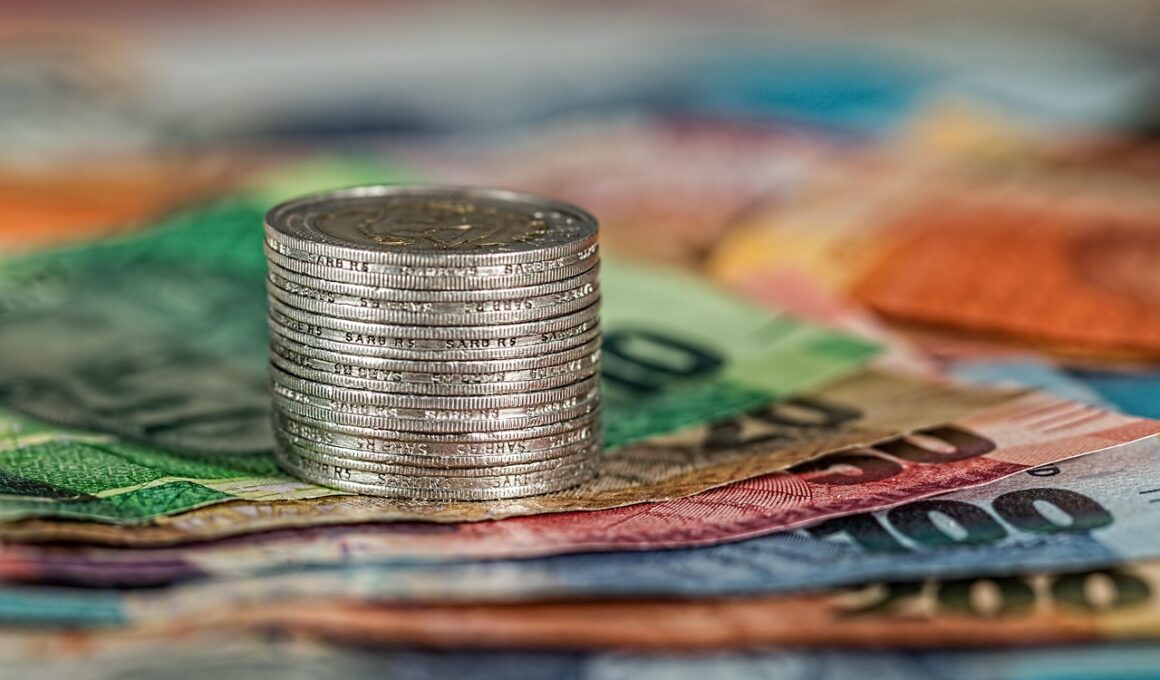Balance of Payments and Its Correlation with GDP
The balance of payments (BoP) is a comprehensive record of a country’s economic transactions with the rest of the world over a specific period. It includes trade in goods and services, as well as financial transfers. Understanding BoP is essential as it reflects a country’s economic position and can impact its currency value. The BoP consists of two primary components: the current account and the capital account. The current account records transactions related to goods and services, while the capital account captures financial transactions. A positive BoP indicates that a country exports more than it imports, which can enhance its GDP through increased economic activity. Conversely, a negative BoP suggests that imports exceed exports, leading to potential economic challenges. Many economists analyze the relationship between BoP and GDP, as fluctuations in the BoP can directly influence economic growth. This understanding aids policymakers in formulating strategies that ensure sustainable economic development. To maintain a balanced economy, governments often monitor BoP trends closely.
The Components of the Balance of Payments
The components of the balance of payments are crucial for understanding its overall impact on the economy. The current account, covering trade in goods and services, shows a nation’s exchange position. This includes imports and exports, where a surplus indicates more money coming in than going out. The capital account documents financial transactions, highlighting investments and loans. In addition, these components are interlinked with various economic indicators. For instance, a rising current account surplus can lead to higher GDP as it means more income from overseas. Conversely, a persistent deficit in the current account may raise concerns about long-term economic stability. The capital account’s fluctuations, such as foreign direct investments (FDI) and portfolio investments, also provide insights into economic attractiveness. Investors often look at both accounts to gauge economic health. Strong performance in both components can attract multinational companies, driving job creation and innovation. Effective management of the BoP ensures a solid economic foundation, promoting growth and improving living standards through increased cross-border trade and capital flows.
GDP, or Gross Domestic Product, represents the monetary value of all finished goods and services produced within a country’s borders in a specific time frame. Thus, the relationship between BoP and GDP is intricate. A significant surplus in the BoP typically aligns with an increase in GDP as this reflects a country’s robust economic activities. However, translating BoP data into GDP changes requires a deep analysis of economic interactions. For instance, a country generating substantial export revenues experiences increased domestic investments, leading to further growth in GDP. However, the effects of a negative BoP can be far-reaching including slower economic growth and increased debt levels. Policies aimed at stimulating exports or controlling imports can help improve the BoP and subsequently drive GDP growth. Additionally, a stable BoP can enhance investor confidence, which is essential for attracting foreign investments. In conclusion, understanding the correlation between BoP and GDP is critical for economic policymakers to ensure a balanced and sustainable economic environment.
Many studies have aimed to quantify the relationship between the balance of payments and GDP growth. Economists often utilize econometric models to establish how variations in BoP affect GDP. Analyzing historical data helps in predicting future trends. For example, researchers consider factors such as exchange rates, foreign investment levels, and global economic conditions. One crucial aspect is its lag effect; shifts in BoP don’t immediately translate to changes in GDP. Thus, models often consider delays of several quarters. Another valuable method is utilizing panel data from multiple countries, which can reveal universal trends and unique country-specific influences. These analyses enable policymakers to devise informed strategies to stimulate economic growth while maintaining healthy BoP levels. Ultimately, comprehensive understanding of these relationships contributes to better fiscal and monetary policies. Various indicators can serve as leading factors in measuring economic health, including productivity rates and consumer spending. A precise understanding of the interactions between BoP and GDP is invaluable for stakeholders and ensures sustainable economic outcomes.
Strategic Importance of a Balanced BoP
The strategic importance of maintaining a balanced balance of payments is indispensable for any economy. A balanced BoP often reflects a stable and thriving economy, attracting foreign investments. When the BoP is in equilibrium, it translates to an improved national credit rating, enhancing borrowing capabilities. In contrast, a deficit can indicate economic weaknesses, leading to inflation and currency devaluation. Policymakers must thus develop robust strategies to ensure BoP stability. This can include promoting exports, reducing unnecessary imports, and creating favorable investment environments. Additional efforts may involve negotiating trade agreements and pursuing diplomatic relations that encourage trade partnerships. Furthermore, a healthy BoP contributes to economic resilience against global financial shocks. Maintaining a surplus can provide a buffer during international crises, ensuring sufficient foreign currency reserves. Regular monitoring of BoP also allows governments to respond swiftly to potential issues. Long-term planning that includes addressing domestic consumption patterns and stimulating export industries can lead to a sustainable BoP. Ultimately, an economically sound balance of payments leads to greater national prosperity and stability.
In recent years, global trade dynamics have significantly affected balance of payments metrics. The rise of digital economies and e-commerce has changed how goods and services are traded. Countries now must adapt to these evolving practices to maintain a favorable BoP. For example, the transition to online platforms can alter traditional export-import channels, necessitating new trading regulations. Emerging economies must also leverage technology to compete in the global marketplace, enhancing their BoP positively. Trade negotiations have become more complex, with countries seeking to protect local industries amidst international competition while also encouraging foreign investments. Customs duties, tariffs, and other restrictions are now strategically analyzed in relation to their impact on the BoP. Furthermore, the ongoing geopolitical concerns have led to shifts in trade relationships, directly influencing economic indicators. A comprehensive understanding of the impacts of global trends on the BoP is essential for modernization. As governments navigate these complexities, adapting to the changing landscape can help bolster their GDP and stabilize BoP. To thrive economically, nations must therefore foster innovation while ensuring responsible economic management.
Conclusion: The Path Forward
In conclusion, the relationship between balance of payments and GDP is pivotal for measuring a nation’s economic health. As globalization and technological advancements reshape trade, understanding these correlations becomes increasingly crucial. Governments need to actively engage in promoting exports and diversifying trade partnerships to uphold a favorable BoP. Moreover, they must implement policies that facilitate investment flows while mitigating potential deficits. Effective fiscal and monetary policies play a significant role in achieving this balance. As economies continue to evolve, cooperation between countries can lead to mutually beneficial trade relationships that enhance the BoP and GDP. Investment in infrastructure and education will also bolster competitiveness, paving the way for sustainable economic progress. Accurate data collection and analysis will empower policymakers by providing critical insights for future planning. Collaboration with international organizations can further enhance strategies aimed at improving BoP and GDP metrics. By focusing on interrelated factors, nations can achieve economic resilience and growth, ensuring long-term prosperity for their citizens. The road ahead requires dedication and informed decisions; achieving harmony in balance of payments and GDP is a multi-faceted endeavor.
To summarize, comprehending the balance of payments and its correlation with GDP is essential for anyone examining economic stability. Policymakers should utilize the insights gained from BoP data to inform decisions that promote fiscal stability. Future research will undoubtedly reveal more about the interconnectedness of global economies and their respective BoPs. Emphasis should be placed on fostering sustainable practices that enhance both BoP and GDP for all parties involved, as mutual growth can lead to shared benefits. This ongoing journey requires vigilance and adaptation to ensure that all nations can thrive in an increasingly interconnected world. Understanding these dynamics fosters a more in-depth approach towards economic planning, with emphasis on supportive frameworks for trade and investment. Ultimately, success hinges on the ability to navigate complex economic landscapes while maintaining balance. Regular assessments and adaptations are paramount to account for ongoing changes in global markets. Additionally, international collaboration could greatly aid in resolving BoP imbalances that affect many economies. With a collective approach, countries can work towards economic health, enhancing not only their own GDP but also contributing to global economic stability.


